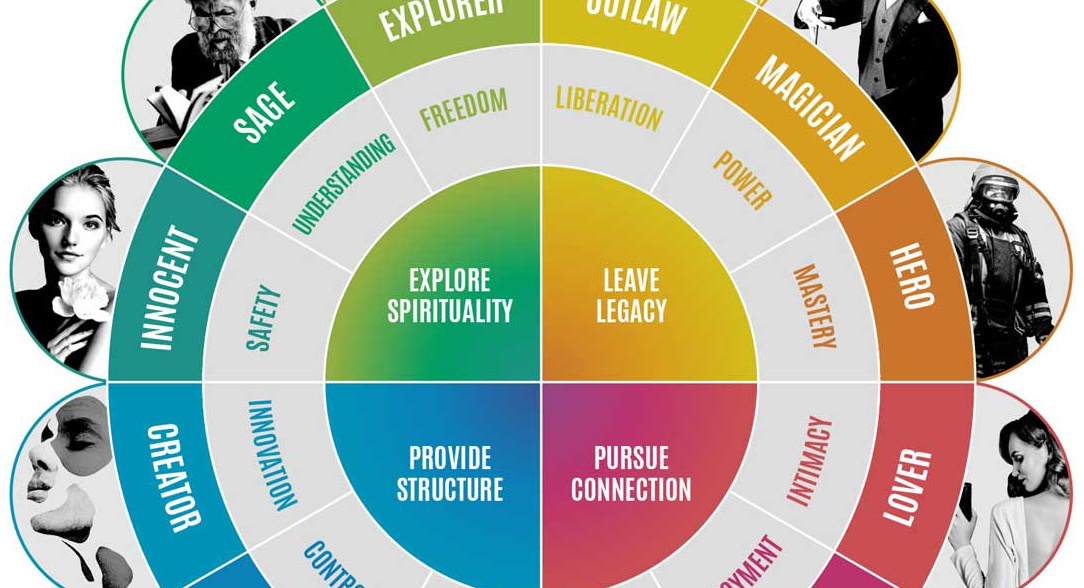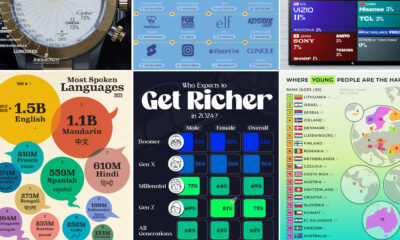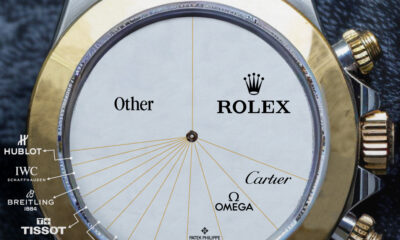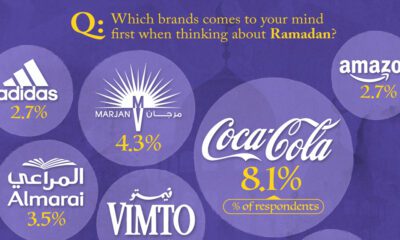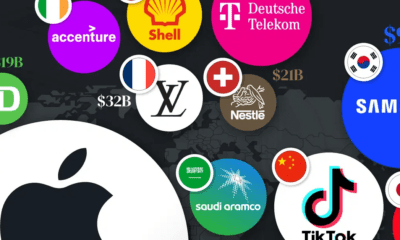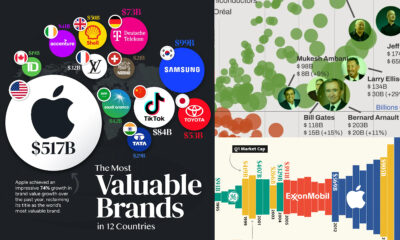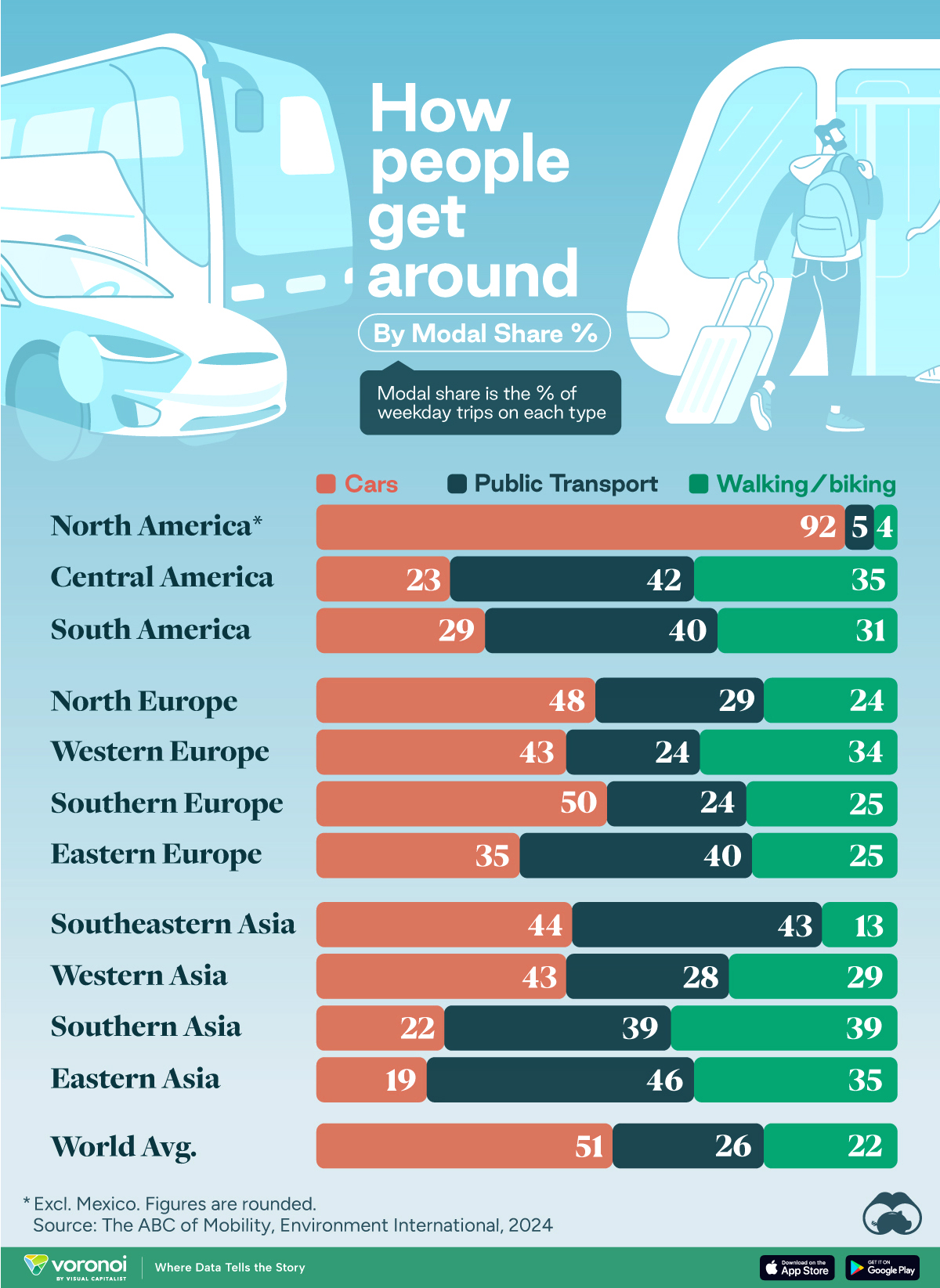Misc
12 Brand Archetypes That Marketers Use to Get Your Attention
Every day, we get bombarded with over 5,000 ads or brand messages vying to capture our attention.
Most of them get deflected by our unconscious minds and hold little relevance or appeal to our daily lives. But at the same time, a select few of these messages get through to us, and we may even feel a sense of personal identity with them.
Sure, these brands might sell products that we like – but it’s also the storytelling behind the brand’s messaging that can resonate with our individual lives.
Brand Archetypes
How do brands craft symbolism and messaging that have consistent appeal?
There are many strategies and techniques used by marketers to accomplish this, but one interesting way to view it is through the lens of archetypes. Brands can anchor their communications to enduring personas or profiles that feed into the human experience, and this allows consumers to identify narratives and symbolism quickly and effectively.
Archetypes are the heartbeat of a brand because they convey a meaning that makes customers relate to a product as if it actually were alive in some way, they have a relationship with it and care about it.
– The Hero and the Outlaw: Building Extraordinary Brands Through the Power of Archetypes
The following 12 archetypes were defined by Swiss psychiatrist Carl Jung and are commonly cited in the fields of marketing, psychology, anthropology, and other social sciences. The graphic comes from a guide put together by Iconic Fox:
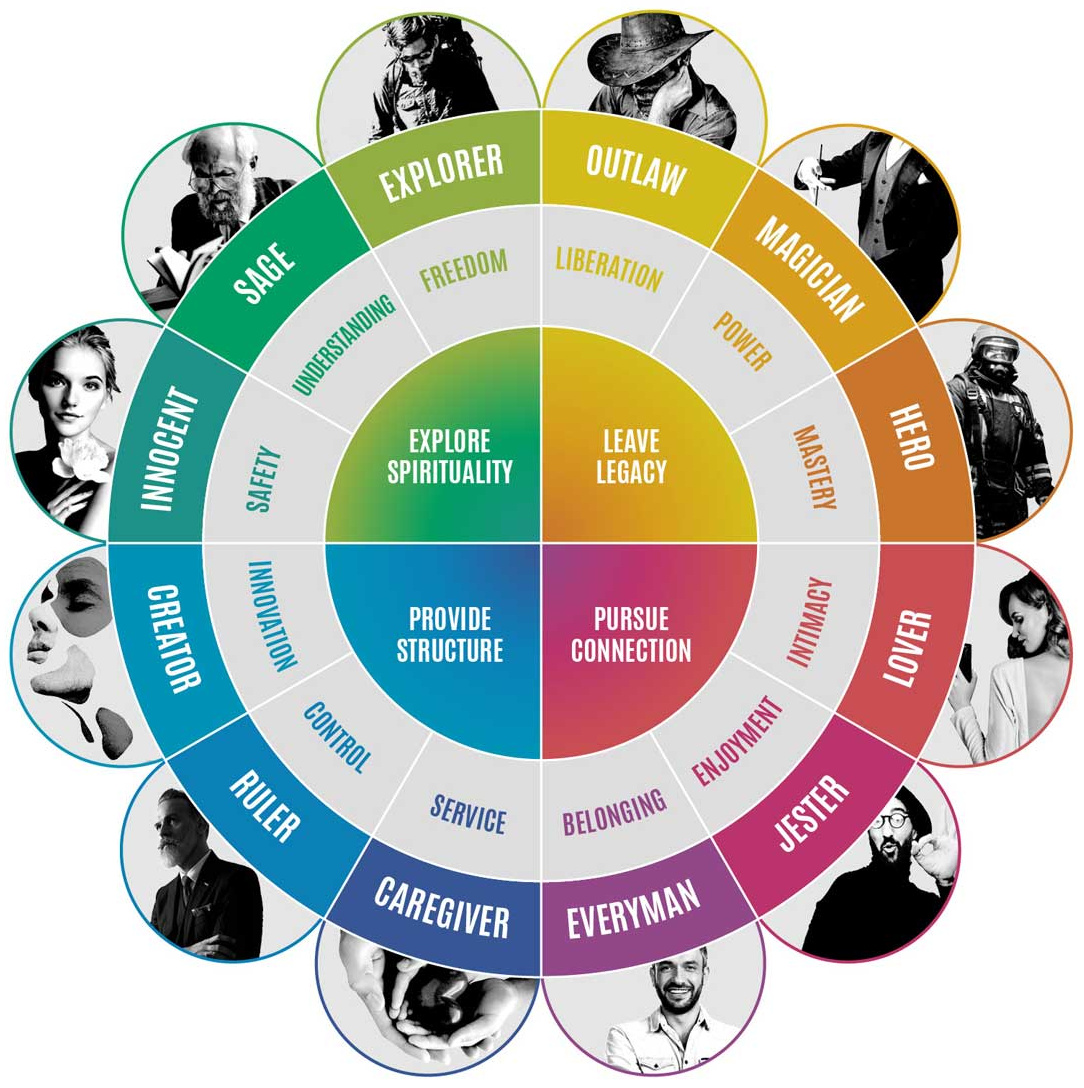
Each brand archetype slots in with the common narratives we see and experience regularly in our culture.
Which do you think Harley Davidson matches the best? What about a brand like Apple?
Brand Archetype Examples
Here are two example archetypes – also from Iconic Fox – that will help better demonstrate the concept. It’s worth looking closely at the brand voice, strategies, and values exemplified by each archetype, and thinking about how they connect to human storytelling and the types of characters we are familiar with throughout history.
We’ll start with “The Outlaw”…
![]()
![]()
About “The Outlaw”
James Dean. William Wallace. Hermoine Granger. Jack Sparrow.
These are all people or characters that see rules as things that are meant to be broken, especially in the name of liberation. The Outlaw appeals to people and stories driven by independence, righteousness, change, and even revenge – and when used as a brand archetype, The Outlaw conveys a message that one can do better than the status quo.
Harley Davidson is a fantastic example of a brand that fits with this archetype.
Next up is “The Creator”…
![]()
![]()
About “The Creator”
Tony Stark. Carrie Bradshaw. John Hammond. Nüwa.
These are all people or characters that see the value of creation of new things. The Creator appeals to those that value self-expression, vision, imagination, and inspiration.
Apple is the iconic brand associated with this archetype, but Lego, Adobe, and Etsy could be considered good fits as well.
More Brand Archetypes
In a world with no shortage of media stimuli, brand archetypes enable marketers to pin down specific imagery and ideas that they know can make a direct impact with their audience. Archetypes are enduring, tried-and-true representations of the stories we have told ourselves for centuries, and that some would even say are entrenched in human nature.
For more on archetypes in marketing, including expanded definitions on the other 10 that we did not cover in depth here, we recommend reading the graphical guide put together by Iconic Fox.
Automotive
How People Get Around in America, Europe, and Asia
Examining how people get around using cars, public transit, and walking or biking, and the regional differences in usage.
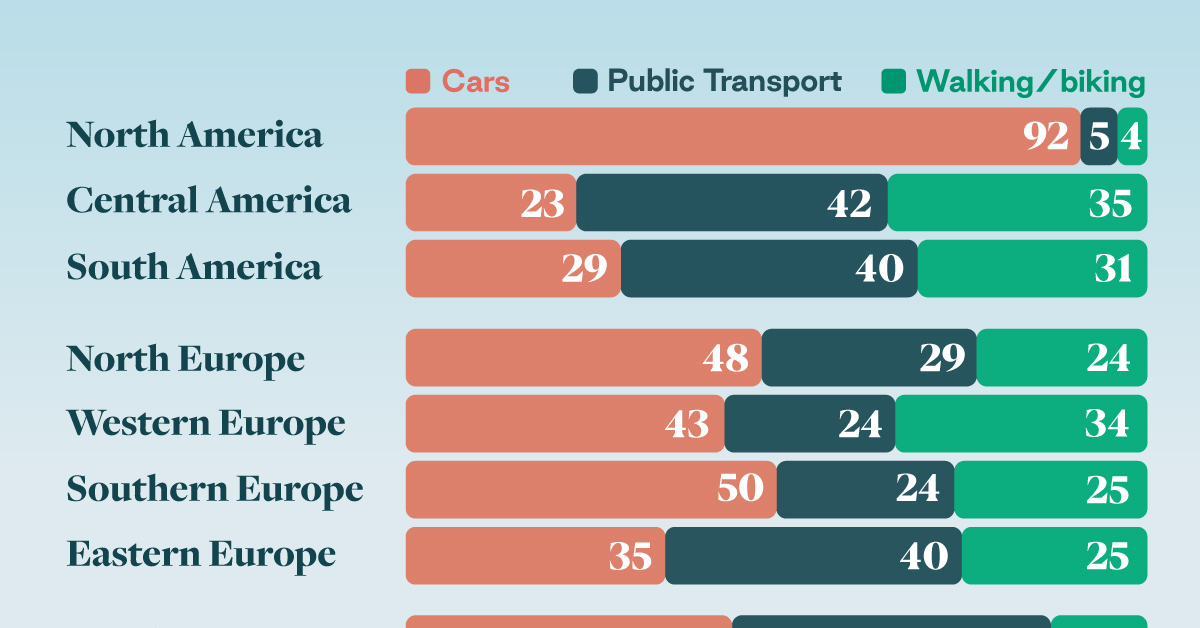
How People Get Around in America, Europe, and Asia
This was originally posted on our Voronoi app. Download the app for free on iOS or Android and discover incredible data-driven charts from a variety of trusted sources.
This chart highlights the popularity of different transportation types in the Americas, Europe, and Asia, calculated by modal share.
Data for this article and visualization is sourced from ‘The ABC of Mobility’, a research paper by Rafael Prieto-Curiel (Complexity Science Hub) and Juan P. Ospina (EAFIT University), accessed through ScienceDirect.
The authors gathered their modal share data through travel surveys, which focused on the primary mode of transportation a person employs for each weekday trip. Information from 800 cities across 61 countries was collected for this study.
North American Car Culture Contrasts with the Rest of the World
In the U.S. and Canada, people heavily rely on cars to get around, no matter the size of the city. There are a few exceptions of course, such as New York, Toronto, and smaller college towns across the United States.
| Region | 🚗 Cars | 🚌 Public Transport | 🚶 Walking/Biking |
|---|---|---|---|
| North America* | 92% | 5% | 4% |
| Central America | 23% | 42% | 35% |
| South America | 29% | 40% | 31% |
| Northern Europe | 48% | 29% | 24% |
| Western Europe | 43% | 24% | 34% |
| Southern Europe | 50% | 24% | 25% |
| Eastern Europe | 35% | 40% | 25% |
| Southeastern Asia | 44% | 43% | 13% |
| Western Asia | 43% | 28% | 29% |
| Southern Asia | 22% | 39% | 39% |
| Eastern Asia | 19% | 46% | 35% |
| World | 51% | 26% | 22% |
Note: *Excluding Mexico. Percentages are rounded.
As a result, North America’s share of public transport and active mobility (walking and biking) is the lowest amongst all surveyed regions by a significant amount.
On the other hand, public transport reigns supreme in South and Central America as well as Southern and Eastern Asia. It ties with cars in Southeastern Asia, and is eclipsed by cars in Western Asia.
As outlined in the paper, Europe sees more city-level differences in transport popularity.
For example, Utrecht, Netherlands prefers walking and biking. People in Paris and London like using their extensive transit systems. And in Manchester and Rome, roughly two out of three journeys are by car.
-
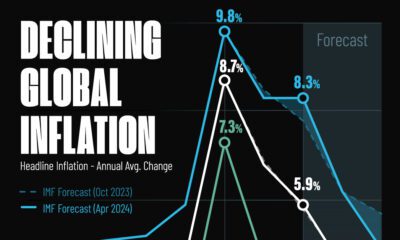
 Markets5 days ago
Markets5 days agoVisualizing Global Inflation Forecasts (2024-2026)
-

 Green2 weeks ago
Green2 weeks agoThe Carbon Footprint of Major Travel Methods
-

 United States2 weeks ago
United States2 weeks agoVisualizing the Most Common Pets in the U.S.
-

 Culture2 weeks ago
Culture2 weeks agoThe World’s Top Media Franchises by All-Time Revenue
-
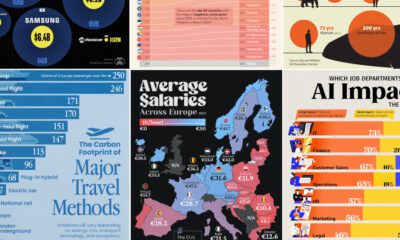
 voronoi1 week ago
voronoi1 week agoBest Visualizations of April on the Voronoi App
-
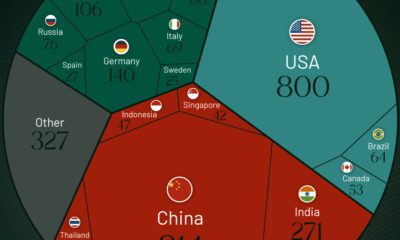
 Wealth1 week ago
Wealth1 week agoCharted: Which Country Has the Most Billionaires in 2024?
-
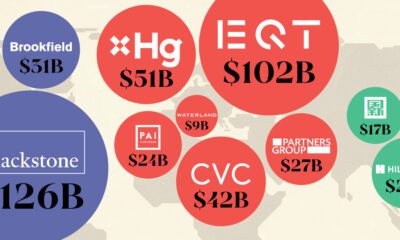
 Business1 week ago
Business1 week agoThe Top Private Equity Firms by Country
-
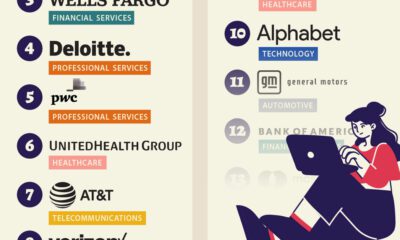
 Markets1 week ago
Markets1 week agoThe Best U.S. Companies to Work for According to LinkedIn

